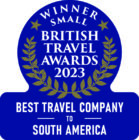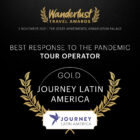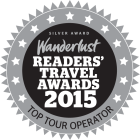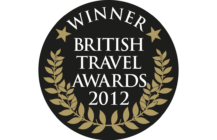48 Hours in… Havana

Havana is a great city for exploring by foot – especially when wandering through Havana Vieja, going where the wind (or the tantalising waft of salsa music) takes you. On every street you'll experience first hand the heady mix of culture and history that makes this city completely one of a kind: indeed you can’t possibly see everything the city has to offer within 48 hours, although this guide will give you a good start. Havana is like an Aladdin’s cave: have a rummage and see what you can find!
DAY ONE
If you're a keen photographer, don't miss the chance to take some stunning pictures of Havana in the morning light, before the harsh sun comes out. My favourite viewpoint is from the hotel Saratoga – ask if you can head up to their pool area, where a panoramic view of Havana unfolds before you, helping you get your bearings in the bustling Cuban capital. From here you can also see most of the most famous landmarks including the Capitolio building, along with Partagas cigar factory tucked behind it and the Parque de la Fraternidad.
Afterwards head towards the Capitolio, where for a small fee you can see the architectural details of what used to be the Cuban Congress as well as an enormous bronze statue, the world's third largest. If you don’t fancy staying indoors, outside the eastern stairways the classic Cuban cars line the street and you can take a photo next to the lovingly restored Chevy and Cadillac cars of the 50s as well as the unusually rotund coco-taxis. You can even arrange to take a ride in one to the malecón (coastal esplanade) or the Plaza de la Revolución. It’s certainly an iconic way to take in the city!
Next walk down to Parque Central where the impressive Gran Teatro de la Habana is situated, the oldest working theatre in the Western hemisphere. It is home to the National Ballet of Cuba and is such an architectural delight inside and out with its ornate detailing.
Cross the Parque Central and head along the Calle Obispo; you will pass many famous buildings such as the hotel Inglaterra, La Floridita bar and the Museo Nacional de Bellas Artes. Calle Obsipo is a pedestrianised street where Cubans come to shop. There’s a real vibrancy to the place and you will notice many book shops selling works by Jose Martí, Fidel Castro and other communist icons.
You may be feeling a bit parched by this point so take advantage of the shade in one of the many bars and cafes dotted around and quench your thirst with an iced drink. A great place to try mojitos is at the Lobby bar at hotel Ambos Mundos: a refreshing pick-me-up in such atmospheric surroundings will give you a real insight into what Cuba felt like during its heyday. Also if you go up to the second floor of the hotel, you will be able to access (for a nominal fee) the room Ernest Hemmingway stayed at on his first visit to Havana. The hotel have kept all his personal effects and the room as the great writer left it.
Head to the Plaza Catedral where you can grab lunch at El Patio, one of the pretty alfresco cafes on the square where musicians will serenade you with Cuban classics made famous by Buena Vista Social Club. This is a really picturesque square flanked by colonial buildings and dominated by one of the oldest cathedrals in the Americas, the Catedral de San Crístobal de la Habana. This 18th century building was constructed by the Jesuits and its facade is a true testament to the grandeur of baroque architecture.
Later, once you're all wandered out, have dinner at El Temperete (tucked behind the Plaza de Armas), a great restaurant which looks a bit swish but offers good value for money for a selection of mainly seafood and fish dishes and has fantastic views overlooking the harbour.
If you want to see Cuba's version of the Moulin Rouge, the place you must visit is La Tropicana night club. It is a bit pricey and a bit out of the way but well worth the visit to soak in the 1940s atmosphere and sit in a club that has seen performances by the likes of Nat King Cole, Carmen Miranda and Josephine Baker. Expect plenty of tights, feather boas and sequins!
However if you prefer something a bit more down to earth, then head to Casa de la Musica. There are two branches of the this bar/club – one in the Miraflores district and the other in the centre, which is a little edgier but a great place to mingle with locals, see the salsa of the street and try a few steps yourself! It's also possible to go in the afternoons, where 'matinee' sessions take place and tend to be cheaper than the evenings... but there’s nothing quite like dancing the night away.
DAY TWO
After all the hedonism of the previous day, I think it's time for something more intellectual! Visit el Museo de Bellas Artes, the national gallery where two buildings house a vast collection of art. The first is near the Parque Central and showcases the work of international masters near the Parque Central; the Cuban collection is on Trocadero (between Agramonte and Av. De las Misiones) and is a world-class facility with art from colonial times all the way to contemporary. I recommend the latter collection, but in case you want to sneak a peek at the international gallery too, your ticket will be valid for both.
Afterwards head to the north-west corner of Plaza Vieja and take a 10-15 minute tour of the camera obscura, where you can see old-fashioned photography in action. You get to see Havana and its skyline in a whole different light and you can zoom in and out of different areas in real time.
Next take a seat at the Taberna de la Muralla (on the same square) for lunch. This is the only mirco-brewery in the capital and was opened in 2004 by an Austrian company, so you can get a break from the omnipresent rum! They also serve grilled meats and burgers for a quick bite.
In the afternoon take a taxi over to the other side of the bay to visit the Parque Histórico Militar Morro-Cabaña, where you can delve into the military history of Cuba in a unique historical setting. Explore the two old forts and the Castillo de los Tres Santos Reyes Magnos del Morro, which was built in the late 16th century out of limestone to protect the harbour and now houses the maritime museum.
Then it's over to the Fortaleza de San Carlos de la Cabaña, one of the largest colonial fortresses in the Americas. It has always been an integral point in Havana’s military history and was even used by Che Guevara as his headquarters during the Cuban Revolution. If you fancy getting to know more about Cuba’s adopted son, you can do so at the Museo de Comandancia del Che in the fortress. On the other side of the museum, there’s a great viewpoint of the Havana sky line from here and the sunsets are spectacular from this part of the city.
Even though the Castillo is impressive, it can get quite chaotic with coachloads of day-trippers, so make more time for the Fortaleza, as it is quieter and more interesting.
At the harbour of La Cabaña, a ceremony called “el cañonazo” takes place. This ceremony, dating from the Spanish era, involves firing a cannon into the bay to indicate the closing of city gates. The men who take part in the cañonazo wear 19th century costume to add to the atmosphere, and it's a great spectacle to watch. The actual cannon-shot is at 9pm but the ceremony starts at 8:30pm.
After the cañonazo, head over to Paladar Doña Carmela (no. 10, Calle B, in the Parque Histórico), a littlepaladar (the given to small private restaurants, which operate under heavy resrictions) set in pretty tropic gardens which offers big portions of traditional Cuban food. A great way to round off your action-packed 48 hours in Havana!
Natalie Paiva, Travel Consultant, Group Tours
Tailor-made holidays
Flexible, custom-made holidays to Latin America created to match your exact requirements: our tailor-made itineraries are as unique as the clients for whom they are designed.
Design my trip


























